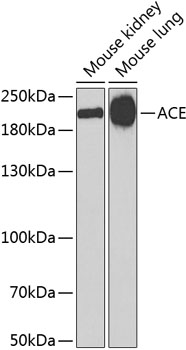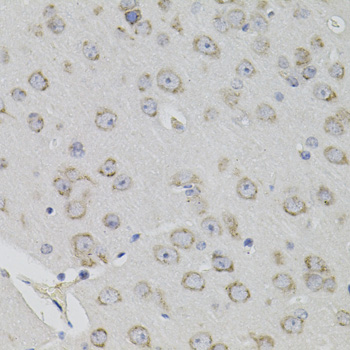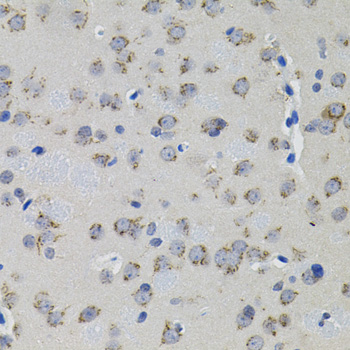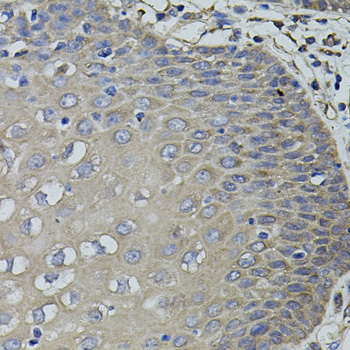-
Product Name
ACE Polyclonal Antibody
- Documents
-
Description
Polyclonal antibody to ACE
-
Tested applications
WB, IHC
-
Species reactivity
Human, Mouse, Rat
-
Alternative names
ACE antibody; ACE1 antibody; CD143 antibody; DCP antibody; DCP1 antibody; ICH antibody; MVCD3 antibody; angiotensin-converting enzyme antibody
-
Isotype
Rabbit IgG
-
Preparation
Antigen: A synthetic peptide of human ACE
-
Clonality
Polyclonal
-
Formulation
PBS with 0.02% sodium azide, 50% glycerol, pH7.3.
-
Storage instructions
Store at -20℃. Avoid freeze / thaw cycles.
-
Applications
WB 1:500 - 1:2000
IHC 1:50 - 1:100 -
Validations

Western blot - ACE Polyclonal Antibody
Western blot analysis of extracts of various cell lines, using ACE antibody at 1:500 dilution.Secondary antibody: HRP Goat Anti-Rabbit IgG (H+L) at 1:10000 dilution.Lysates/proteins: 25ug per lane.Blocking buffer: 3% nonfat dry milk in TBST.Detection: ECL Basic Kit .Exposure time: 90s.

Immunohistochemistry - ACE Polyclonal Antibody
Immunohistochemistry of paraffin-embedded mouse brain using ACE antibody (40x lens).

Immunohistochemistry - ACE Polyclonal Antibody
Immunohistochemistry of paraffin-embedded rat brain using ACE antibody (40x lens).

Immunohistochemistry - ACE Polyclonal Antibody
Immunohistochemistry of paraffin-embedded human esophagus using ACE antibody (40x lens).
-
Background
Converts angiotensin I to angiotensin II by release of the terminal His-Leu, this results in an increase of the vasoconstrictor activity of angiotensin. Also able to inactivate bradykinin, a potent vasodilator. Has also a glycosidase activity which releases GPI-anchored proteins from the membrane by cleaving the mannose linkage in the GPI moiety.
Related Products / Services
Please note: All products are "FOR RESEARCH USE ONLY AND ARE NOT INTENDED FOR DIAGNOSTIC OR THERAPEUTIC USE"
